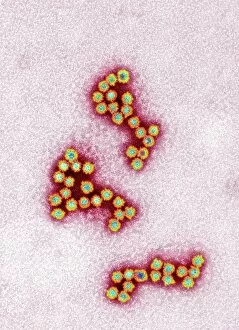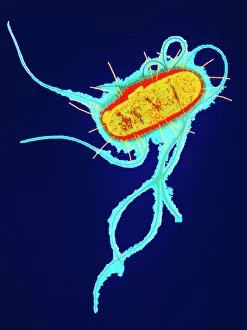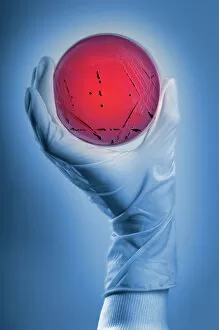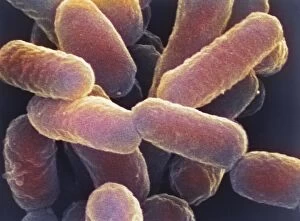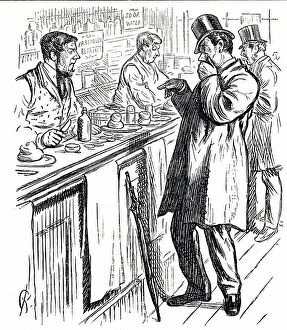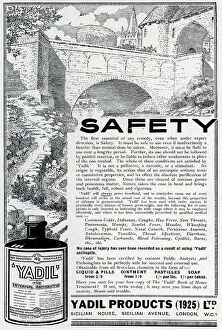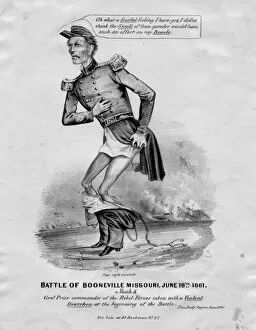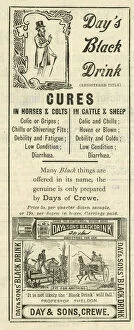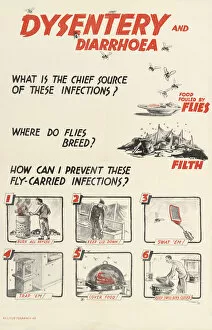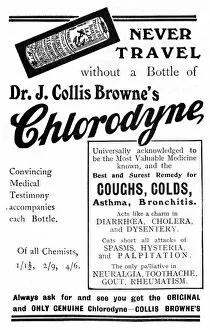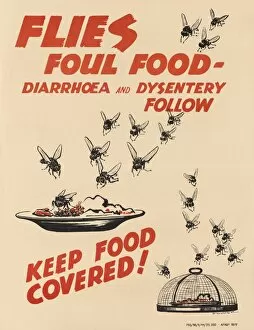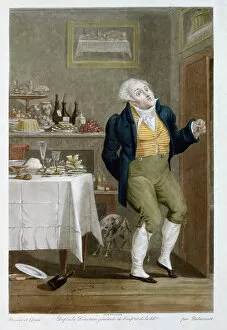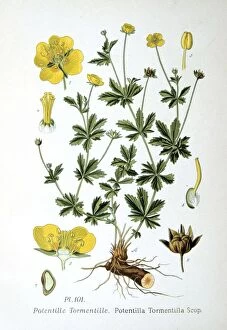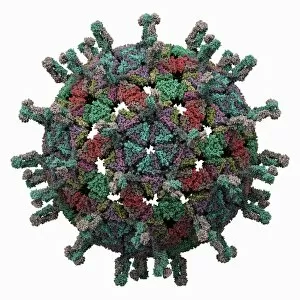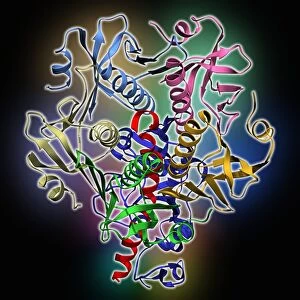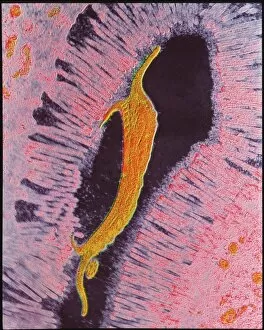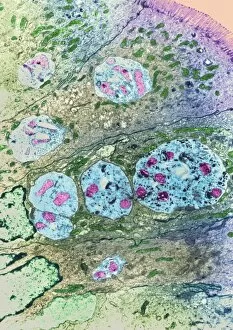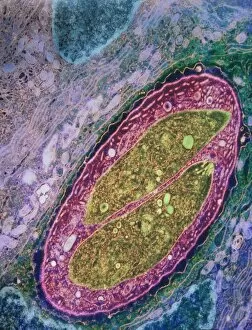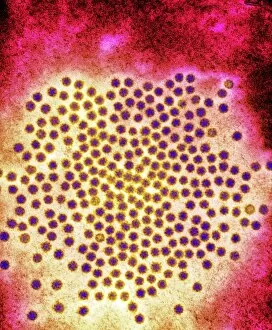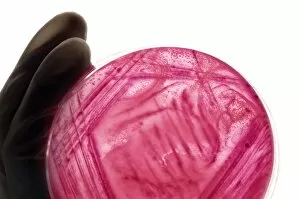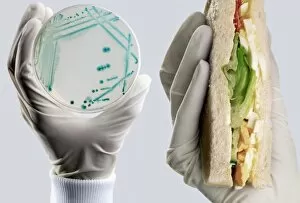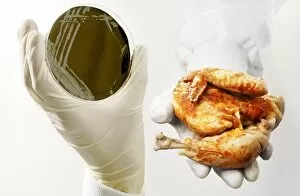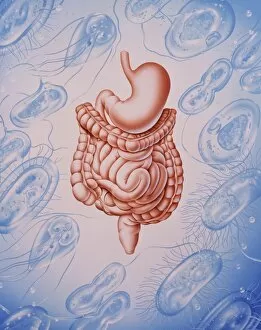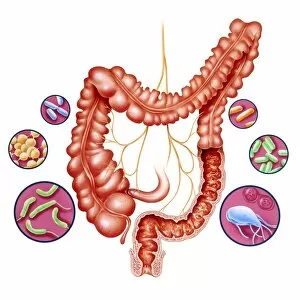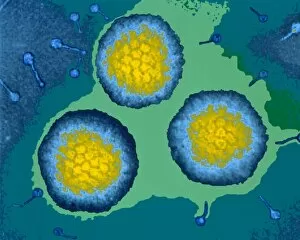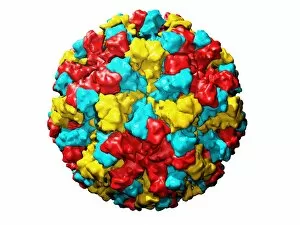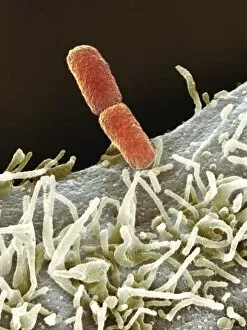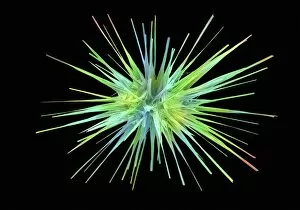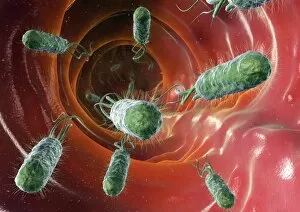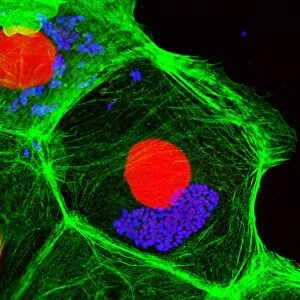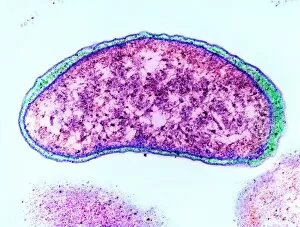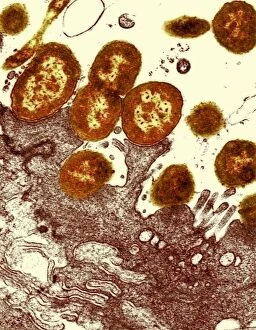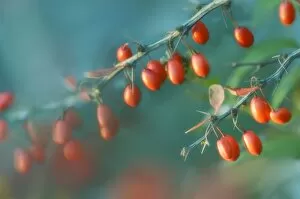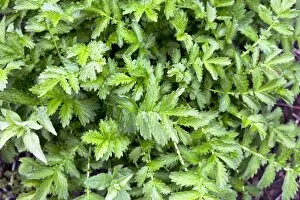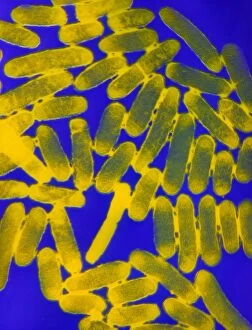Diarrhoea Collection
"Unmasking the Culprits: A Closer Look at Diarrhoea" Norovirus particles under the microscope (TEM) reveal their microscopic power, causing havoc in our digestive system
For sale as Licensed Images
Choose your image, Select your licence and Download the media
"Unmasking the Culprits: A Closer Look at Diarrhoea" Norovirus particles under the microscope (TEM) reveal their microscopic power, causing havoc in our digestive system. E. Coli bacterium, a notorious troublemaker, can lead to severe diarrhoea if ingested through contaminated food or water. Intestinal protozoan parasites captured by TEM remind us of the hidden dangers lurking within our bodies that trigger diarrhoeal episodes. Salmonella culture reminds us of the importance of proper food handling and hygiene practices to prevent this bacterial infection from causing distressing bouts of diarrhoea. E. coli 0157:H7 bacteria – a strain known for its virulence – serves as a reminder that not all strains are harmless and can cause severe cases of diarrhoea. SEM image showcases the intricate details of E. coli bacteria responsible for triggering gastrointestinal discomfort during episodes of diarrhoea. Coloured SEM reveals Escherichia coli bacteria in vivid hues, highlighting their presence and impact on our intestinal health during bouts of diarrhoea. Yadil Advertisement offers hope for relief from debilitating symptoms associated with diarrhoeal illnesses, reminding us that effective treatments are available. WW2 Poster - "Dysentery and Diarrhea" educates soldiers about preventive measures against these ailments during wartime when sanitation was crucial for troop health. Battle of Booneville sketch depicts General Price's unfortunate encounter with violent diarrhea at the start of battle – a reminder that even historical figures were not immune to this common ailment. Days Black Drink - Cures for animals: Ancient remedies like Days Black Drink highlight humanity's long-standing quest to find cures for both humans and animals affected by diarrhea.

